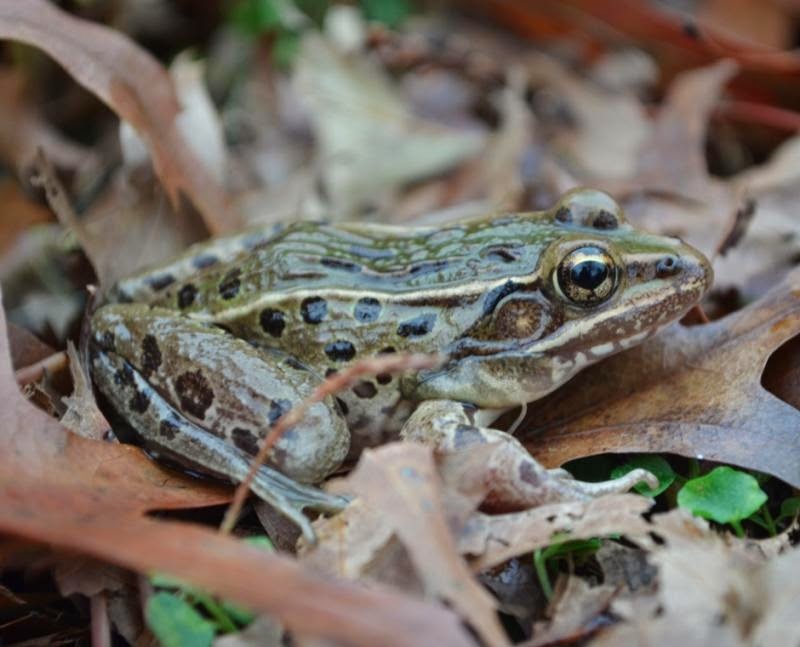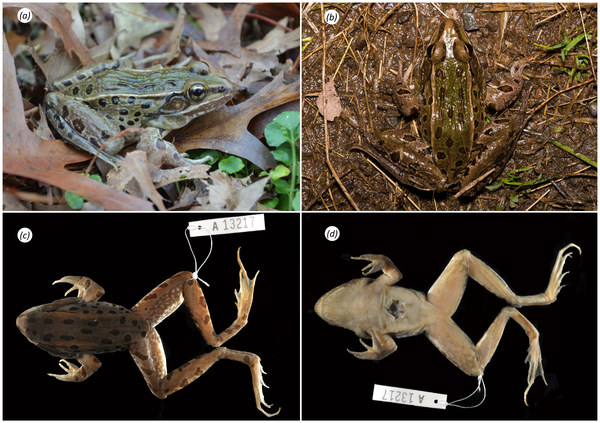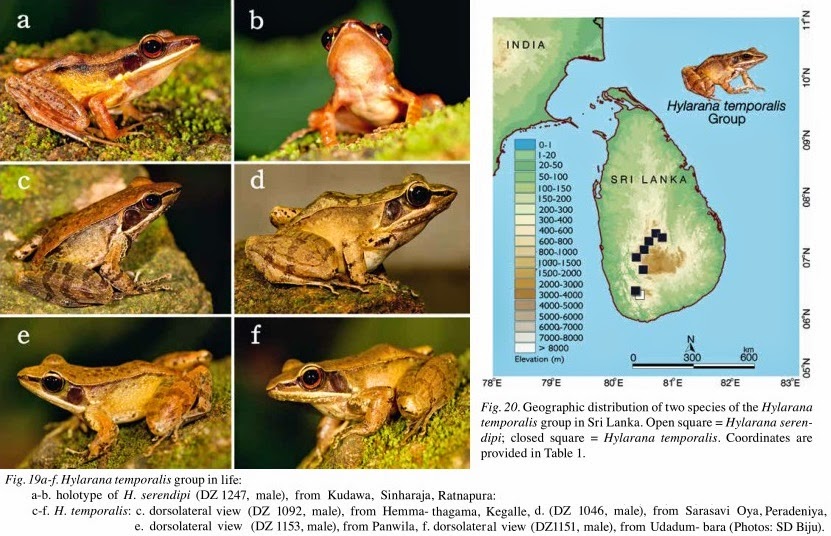 |
| Atlantic Coast Leopard Frog | Rana kauffeldi Feinberg, Newman, Watkins-Colwell, Schlesinger, Zarate, Curry, Shaffer & Burger, 2014 |
Abstract
We describe a new cryptic species of leopard frog from the New York City metropolitan area and surrounding coastal regions. This species is morphologically similar to two largely parapatric eastern congeners, Rana sphenocephala and R. pipiens. We primarily use bioacoustic and molecular data to characterize the new species, but also examine other lines of evidence. This discovery is unexpected in one of the largest and most densely populated urban parts of the world. It also demonstrates that new vertebrate species can still be found periodically even in well-studied locales rarely associated with undocumented biodiversity. The new species typically occurs in expansive open-canopied wetlands interspersed with upland patches, but centuries of loss and impact to these habitats give some cause for conservation concern. Other concerns include regional extirpations, fragmented extant populations, and a restricted overall geographic distribution. We assign a type locality within New York City and report a narrow and largely coastal lowland distribution from central Connecticut to northern New Jersey (based on genetic data) and south to North Carolina (based on call data).
 |
| Figure 2. Photographs of Rana kauffeldi sp. nov. holotype (YPM 13217). Male frog presented live: (a) whole body, dorsolateral view and (b) dorsal view; and preserved: (c) dorsal view and (d) ventral view. Photographs taken by BRC (a), BZ (b), and GWC (c–d). doi: 10.1371/journal.pone.0108213.g002 |
Diagnosis and Description
Rana kauffeldi sp. nov.
urn:lsid:zoobank.org:act:149ED690-FA7D-4216-A6A1-AA48CC39B292.
Holotype: YPM 13217, adult male (Fig. 2, Table 1), collected from Bloomfield region, Richmond County (Staten Island), NY, United States, on 15 November 2011, by B. R. Curry.
Etymology: The specific epithet is a patronym in recognition of Carl F. Kauffeld who studied the R. pipiens complex in the NY/NJ-metro area and concluded that three distinct species, including an undocumented central species, occurred there.
Common Name: We propose the common name ‘Atlantic Coast Leopard Frog’ for this species.
Jeremy A. Feinberg, Catherine E. Newman, Gregory J. Watkins-Colwell, Matthew D. Schlesinger, Brian Zarate, Brian R. Curry, H. Bradley Shaffer and Joanna Burger. 2014. Cryptic Diversity in Metropolis: Confirmation of a New Leopard Frog Species (Anura: Ranidae) from New York City and Surrounding Atlantic Coast Regions. PLoS ONE, 2014; 9 (10): e108213 DOI: dx.doi.org/10.1371/journal.pone.0108213







































